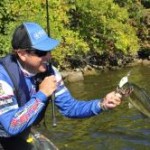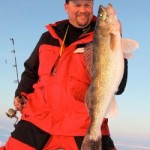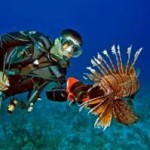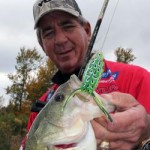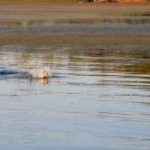FWS: No Hatchery Closing, For Now
from The Outdoor Wire
Etta Pettijohn
Since media reports revealed the U.S. Fish and Wildlife Service’s (FWS) plans to quietly shutter several federal fish hatcheries in 2014, the agency has backed off from those plans – but not from closing them in the future.
Tennessee Sen. Lamar Alexander expressed disappointment and concern after reviewing the agency’s “Strategic Hatchery and Workforce Planning Report,” and conversations with FWS Director Dan Ashe.
“It is fortunate that we have an ongoing three-year agreement between the Tennessee Valley Authority and state and federal wildlife agencies to keep Tennessee’s hatcheries open and producing fish, but the threat of closure still exists,” said Alexander, who has two federal hatcheries in his district.
Plans to eliminate mitigation hatcheries from the FWS mission began in the mid- 1990s, but media attention and political pressure blocked those moves. Beginning in 2011, the agency intensified its efforts, despite Congressional mandates, presidential decrees encouraging outdoor activity, and public support for the facilities.
In 2012 the FWS slashed funding for mitigation hatcheries from its FY 2013 budget, hoping to hand management and funding to other agencies. The FWS attempted it again in 2012, but Congress forced it to finance them that year, directing the agency to secure other federal funding before defunding of the nine then targeted for closure.
Despite all this, by all appearances, agency officials remain determined to close hatcheries and direct its funding and priorities in recovery of endangered and threatened species, restoration of tribal trust responsibilities, and other propagation programs for native species.
FWS officials cited budget cuts in 2012, although Rick Nehrling, a retired 38-year veteran of the FWS (19 spent overseeing southeastern hatcheries) asserts that budget documents clearly indicate Fisheries is the only resource program in the agency the Directorate proposed for reductions then, and planned closures in FY 2012 and FY 2013.
“The other five resource programs (National Wildlife Refuge System, Endangered Species, etc.) have all had substantial budget increases during the same time period,” Nehrling contended.
Now FWS is saying if sequestration continues into the 2014 fiscal year, the agency will have lost close to $6 million for hatchery operations since 2012.
“This report sounds the alarm on a hatchery system unable to meet its mission responsibilities in the current budget climate,” Director Ashe has stated.
It appears the new agency mantra is “sequestration will require the hatchery closures.”
Ashe said the 2012 “Strategic Hatchery and Workforce Planning Report,” found ongoing budget reductions due to sequestration and increasing costs for operations spurred the review of the 70 national hatcheries.
“This report sounds the alarm on a hatchery system unable to meet its mission and responsibilities in the current budget climate,” Ashe asserted. “In the coming months through the 2015 budget process, I have directed the Service to work with all of our partners to determine whether the options identified in the report, or others, are necessary and appropriate to put the system on a more sustainable financial footing.”
A working group trying to come up with answers includes the FWS, the TVA, and the Tennessee and Georgia state wildlife agencies. TVA signed an agreement with federal and state wildlife agencies in May to pay more than $900,000 per year for the next three years to replace fish killed by TVA dams, and keep Tennessee’s hatcheries producing fish while the working group develops a permanent solution, said Tennessee Sen. Lamar Alexander.
“I will help to find a long-term solution, because the nearly 900,000 Tennesseans and visitors who buy fishing licenses in our state depend upon these hatcheries, as they are the principal reason Tennessee has some of the best trout fishing in the country,” said Alexander, who in 2012 brokered a deal with the Tennessee Valley Authority (TVA) to provide some of the funding for the hatcheries there.
Meanwhile, insiders report the battle is merely delayed, and far from over, and that the agency has full intentions to end its century-old mission of mitigation stocking, an effort that many communities where these are located are dependent on for fishing license sales and sales tax revenue.
